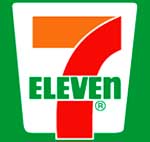Tagging is it
The latest attempt to organize the Web-going experience is tagging. Using sites such as del.icio.us and www.technorati.com, Web surfers can tag any Web link they choose and then categorize and save it on a tagging site for later retrieval. It’s not unlike the bookmarking process, although in this case, your bookmarks are shared with the rest of the world. At first blush, the tagging process appears cumbersome and time-consuming as users may have to wade through a mass of potentially unrelated or uninteresting links, especially if their definition of the topic at hand is different from the tag-gatherers’. Still, allowing like-minded but geographically separate groups to work together on and share the fruits of an information-gathering process does hold some appeal. A BusinessWeek article cited an example of bloggers interested in applying technology to non-profit groups who adopted the “NPTech” tag and created a bibliography of more than 900 articles, Web links and blog posts.
Sharing is also behind the photo Web site www.flickr.com, which was recently purchased by Yahoo! Inc. Yahoo and Google have clearly taken notice of the rise of tagging, as it has the potential to steal eyeballs from traditional search engine sites. For marketers, tagging sites have the potential to serve as labs for trend watching. Examining the ways that consumers group and categorize information could provide clues to the language and images that can be used to communicate with them. Flickr, for example, features a multitude of tagged photo sets on topics such as “summer,” “wedding,” “vacation” and “fun.”
(“Picking Up Where Search Leaves Off,” BusinessWeek, April 11, 2005)
Branded brands still going strong
The March issue of trendwatching.com’s indispensable e-newsletter (sign up for free subscription at www.trendwatching.com) contained an extensive update on the branded brands trend. Cataloging some of the newer and more interesting examples of corporate partnerships across a wide range of products and services, the newsletter covered Philips and P&G’s IntelliClean toothbrushing system, which incorporates the Sonicare toothbrush and Crest toothpaste; Apple teaming with car makers Mercedes-Benz, Volvo and Nissan; Holiday Inn and its Nickelodeon Family Suites; and Starbucks and Jim Beam launching Starbucks Coffee Liqueur.
There are certainly a number of potential pitfalls behind these marriages but as the newsletter points out, this type of creative use of existing assets can lead to true win-wins for both sides. Many such arrangements arise from obvious synergies (is it safe to use that word again?) - a toothbrush maker and a toothpaste maker are natural partners - but others require a bit of imagination. Still, the leaps aren’t all that hard to make. Think of family accommodations and Holiday Inn comes to mind. Family entertainment? Nickelodeon. Sounds like a match made in heaven, from a kid’s and a marketer’s perspective.
Try an experiment: Take a minute to jot down your brand’s core equities and values. Then think about other well-respected companies that share those attributes. Don’t be afraid to cast a wide net. Find some intriguing matches? You may want to do a little research.
Move over, blueberries
The newest superfood is here: açai. Sporting as much calcium as milk, more antioxidants than blueberries and delivering a coffee-like kick, the berries taste like chocolate-covered cherries. The sole U.S. importer of the berries, San Clemente, Calif.-based Sambazon (the berries grow in the Amazon rainforest) sold $2 million worth of bottled and frozen açai smoothies in 2004, courtesy of deals with grocers Wild Oats and Whole Foods. Can açai cereal be far behind?
(Açai Berries Hit the Big Time,” Business 2.0, January/February 2005)
At 7-Eleven, it’s oh thank heaven for technology
If you need another example of how investments in technology and a focus on the customer can reap concrete rewards, consider 7-Eleven. In a Business 2.0 article, writer Elizabeth Esfahani showed how 7-Eleven CEO Jim Keyes has used technology and store-level empowerment to boost sales, attract new customers and wrest control over distribution and product decisions from major suppliers. The company has also gotten into product development, using store sales data to identify trends and unmet needs. After spotting a product opportunity, it often partners with third-party manufacturers, an approach that has yielded hits like towelettes designed to remove coffee stains, and roadkill-shaped gummy candy. “We’ve gone from having no idea what we were selling to predicting what customers want before they even know it,” said David Podeschi, 7-Eleven’s senior vice president.
The company has also gotten into product development, using store sales data to identify trends and unmet needs. After spotting a product opportunity, it often partners with third-party manufacturers, an approach that has yielded hits like towelettes designed to remove coffee stains, and roadkill-shaped gummy candy. “We’ve gone from having no idea what we were selling to predicting what customers want before they even know it,” said David Podeschi, 7-Eleven’s senior vice president.
(“7-Eleven Gets Sophisticated,” Business 2.0, January/February 2005)
Getting inside their heads - literally
As part of a larger piece on tech trends to watch, Fortune magazine reported on fMRI, or functional magnetic resonance imaging, which detects the flow of blood to the brain’s centers of pleasure, memory or thought. Baylor neuroscientist Read Montague’s research seems to indicate that blood flow increases to certain parts of the brain’s prefrontal cortex if the viewer likes what he or she is seeing. Steven Quartz of Caltech and Tim McPartlin of Lieberman Research Worldwide in Los Angeles have created an fMRI service aimed at filmmakers which will test audience reactions to film trailers. Their next plan is to offer fMRI studies on items from logos to packaged goods.
("Ten Tech Trends," Fortune, January 10, 2005)
